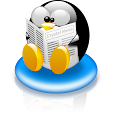Vitamin D (VITAD)
 |
| Five Essential Domains: VITAD: video, image, text, audio, data - 'Vitamin D' |
Just like all subject domains, tech has its own overarching domains or strands that are an efficient way to organise the essential skill sets needed for true digital literacy. We should not neglect opportunities to read and write, for example, realistic fiction, or physics or shape and space in Mathematics, I believe the same applies to what could be called the 'digital domains' or modes of digital technologies: text, image, video, audio, and data handling.
Digital Illiteracy...
An easy easy way to recall these essential areas is with the acronym 'VITAD', 'vitamin digital', now when you're considering whether not you can consider yourself, your students or any 21st century citizen to be truly digitally literate, how do they measure up to VITAD?- Can they view, edit, create, compose with video?
- Can they organise, edit, resize, manipulate, incorporate image?
- Can they browse/read/search text? Are they proficient at word processing, commenting, curating texts?
- Can the manage audio files, organise, edit, create, compose audio using multiple audio tracks/sound effects?
- Do they know their way around a spreadsheet? Can they organise data efficiently, perform basic calculations, use functions and formulae, analyse, synthesise, and model data? Can they think computationally?
To put it another way - we're talking about students becoming holistically literate, that literacy has to incorporate 'multiliteracies' including language, scientific/methodological ways of thinking, mathematical literacy and of course digital literacy. ALL of these can be defined as 'subjects', all of these could also be (and arguably should/could be) taught in an integrated way. Just because we've chosen to integrate a subject, does not mean it should be treated less rigorously - integration should not mean invisibility - at least not for teachers. (I'd argue invisibility would be great from a student's perspective, but so would it be for maths and science et al - they don't see it as a 'subject' it's just another natural (for them) way of thinking and working)
WWPP
However... if there is one thing I've learned in my now 8 years as a DLC, and from now over 20 years working with 'edtech' or the integration of digital technologies in the classroom from K-12, it's that there is a fundamental shift, in terms of how these domains are experienced as students move though the school lives. A shift from VITAD to WWPP, what is WWPP? stakes examinations.
- Word Processing
- Websites/Web Search
- PowerPoint Slideshows (or similar)
- PDFs & Posters
WWPP describes the fundamental domains that are the norm for most teachers, and represent the actual reality in most secondary school classrooms, especially those that are organised around the premise of preparing students for high stakes examinations. The fact is that, like it or not, what studies repeatedly show as 'effective' use, is use that can be translated into evidence that is represented by a standardised test score, and if that is the only metric we are prepared (or able) to consider, then WWPP is the model that works, for more on the practical ramifications of this in high school classrooms, read my post: PDFs, Pragmatism & WWPP.




No hay comentarios:
Publicar un comentario